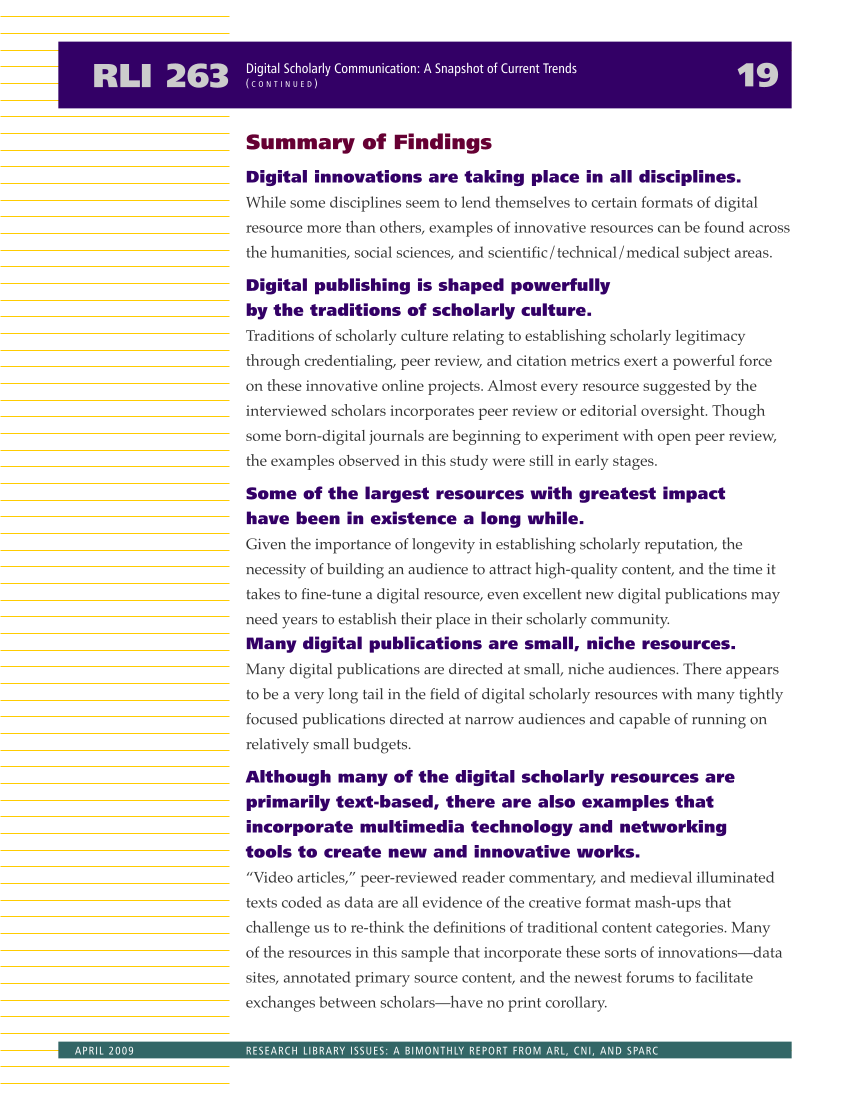Summary of Findings Digital innovations are taking place in all disciplines. While some disciplines seem to lend themselves to certain formats of digital resource more than others, examples of innovative resources can be found across the humanities, social sciences, and scientific/technical/medical subject areas. Digital publishing is shaped powerfully by the traditions of scholarly culture. Traditions of scholarly culture relating to establishing scholarly legitimacy through credentialing, peer review, and citation metrics exert a powerful force on these innovative online projects. Almost every resource suggested by the interviewed scholars incorporates peer review or editorial oversight. Though some born-digital journals are beginning to experiment with open peer review, the examples observed in this study were still in early stages. Some of the largest resources with greatest impact have been in existence a long while. Given the importance of longevity in establishing scholarly reputation, the necessity of building an audience to attract high-quality content, and the time it takes to fine-tune a digital resource, even excellent new digital publications may need years to establish their place in their scholarly community. Many digital publications are small, niche resources. Many digital publications are directed at small, niche audiences. There appears to be a very long tail in the field of digital scholarly resources with many tightly focused publications directed at narrow audiences and capable of running on relatively small budgets. Although many of the digital scholarly resources are primarily text-based, there are also examples that incorporate multimedia technology and networking tools to create new and innovative works. “Video articles,” peer-reviewed reader commentary, and medieval illuminated texts coded as data are all evidence of the creative format mash-ups that challenge us to re-think the definitions of traditional content categories. Many of the resources in this sample that incorporate these sorts of innovations—data sites, annotated primary source content, and the newest forums to facilitate exchanges between scholars—have no print corollary. RLI 263 19 Digital Scholarly Communication: A Snapshot of Current Trends ( C O N T I N U E D ) APRIL 2009 RESEARCH LIBRARY ISSUES: A BIMONTHLY REPORT FROM ARL, CNI, AND SPARC











































